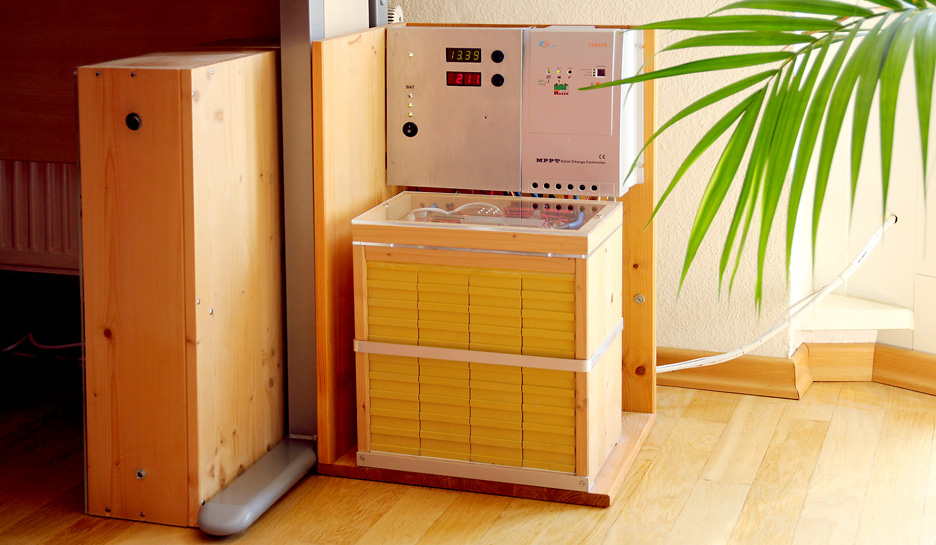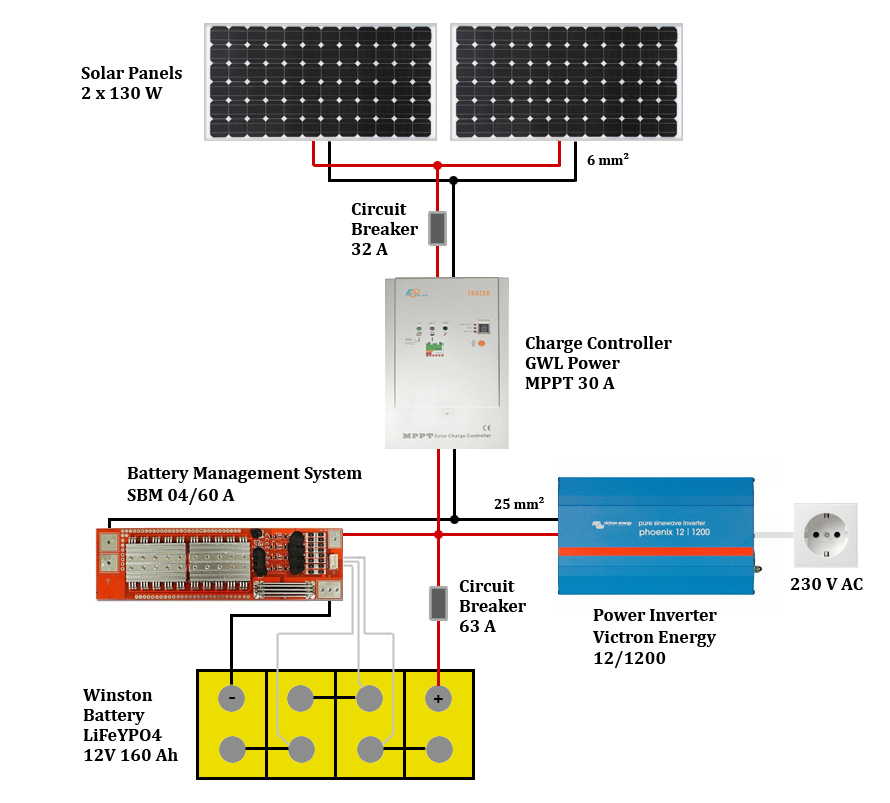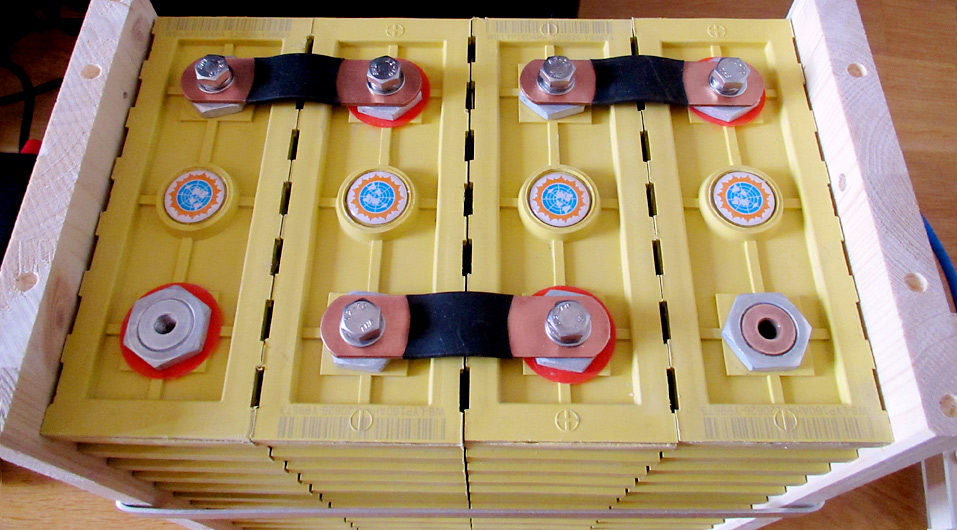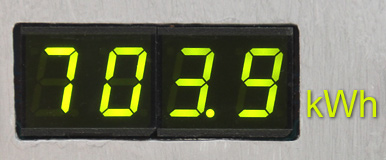Off-Grid Solar System
 Several years ago I decided to "go green", well at least a bit. I've built an off-grid solar system suitable for powering most of the devices in my living room like TV, computer, printer, lighting, musical instruments and other equipment.
Several years ago I decided to "go green", well at least a bit. I've built an off-grid solar system suitable for powering most of the devices in my living room like TV, computer, printer, lighting, musical instruments and other equipment.Having installed two 130 W solar panels on the balcony the system provides me with about 150 kWh of green energy every year.
The following chapters summarize the build and may hopefully encourage you to assemble your own system.
Preface
A stand-alone solar system works completely independent from the electrical grid, thus the name "off-grid". The major difference to grid-tied systems is the need for a battery, since unused energy would be wasted otherwise.
Before I go into details on the components involved I'd like to point out what the main pros and cons of a stand-alone solar system are:
Advantages:
- Obviously, using renewable energy and slowing down global warming
- Independence from the local ernergy provider, at least to a certain extend
- Running on solar power anytime during the day, also at night
- Almost maintenance free
- During winter and on overcast days there are only little amounts of energy available
- The system becomes not "green" until it has generated as much energy as was used for its production, transport and installation (energy payback time)
- Battery powered off-grid systems can be ecologically worthwhile, but not economically worthwhile, because good energy storage solutions are still quite expensive. So even after many years of use the overall price per kWh is effectively higher than the price charged by the local energy provider.
- Household safety means like the residual current device cannot come into effect since the system is not connected to the mains
Schematic Overview
An off-grid solar system consists of at least three basic components. The solar panels, the charge controller and some kind of battery, whereas the latter is also the most critical part. If you need to power conventional household devices you also have to add a power inverter, which converts DC voltages into nominal AC mains voltage.

| Warning: Even though LiFePO4 cells are much more safe than conventional lithium ion batteries, make sure you never short-circuit them in any situation. Read the batteries manual in its entirety before use. |
Dimensioning
How do I choose the right components ?
Well, the selection of components can be quite time-consuming and complex but in the end the whole problem boils down to one fundamental question:
How much energy do I need ?
So, as a first step I estimated that the devices in my living room (the loads) would not consume more than 1.5 kWh per day. Which gave me a rough number for sizing the battery. After reading a lot on different battery technologies and their pros & cons I eventually went for Winston lithium iron phosphate cells (LiFePo4). One of the main reasons being their superior life span.
With carefull treatment these cells can last many thousand charge/discharge cycles and up to 20+ years. In order to reach such a long life span there are of course limitations involved. One of them being not to discharge the cells below 30% or 3.2 Volts respectively. Thus, for storing 1.5 kWh of usable energy a battery capacity of at least 2.0 kWh is needed.
Another question with respect to battery selection is the actual nominal voltage of the system. Standalone systems usually work with voltages like 12, 24, 36 or even 48 Volts. The decision for the system voltage and thus for the number of LiFePo4 cells involved depends on the maximum current flow into and out of the battery pack. I calculated that my electrical loads wouldn't require more than 750 Watts at a time. For a 12 Volt system this results in:
Imax = 750 W / 12.8 V = 58.6 A
Currents below 100 A are considered manageable and don't require extensively thick cables. So I knew a 12 Volt system would be sufficient. In terms of LifePO4 batteries a 12 Volt system consists of 4 cells, yielding a usable voltage range of about 12.8 to 13.8 Volts.
With those numbers in mind, I could now calculate how many amp hours the battery pack and thus every single cell needed to provide:
Qmax = 2.0 kWh / 12.8V = 156.3 Ah

The Panels
As we now have determined the properties of the battery pack what about the actual solar panels ?
Let's take a look a the best possible photovoltaic conditions in Germany:
- Panels are pointing towards south
- Panels are angled at about 25 to 45 degrees
- Panels are never shadowed or partly shadowed
- A cool but bright summer day with cloudless sky
So how many panels are needed for collecting 1.5 kWh ?
N100wPanels = 1500 Wh / 600 Wh = 2.5
N130wPanels = 1500 Wh / 780 Wh = 1.9
As you can imagine such optimal solar conditions as described above are quite rare. So in practice, either the panel count would need to be increased or a lower solar yield had to be acceppted. I went with the later because it turned out that on average the two 130 Wp panels are sufficient for my needs and during summer the system often generates more energy than I can make use of.
Solar Yield

Within 5 years the here presented two panel off-grid system provided me with around 700 kWh of eletrical energy. The theoretical maximum solar yield within this time frame would have been around 800 kWh/kWp * 0.26 kWp * 5 yrs = 1040 kWh. But it's in the nature of running an off-grid system that you normally don't make use of all the energy it generates over time.
<to be continued>





